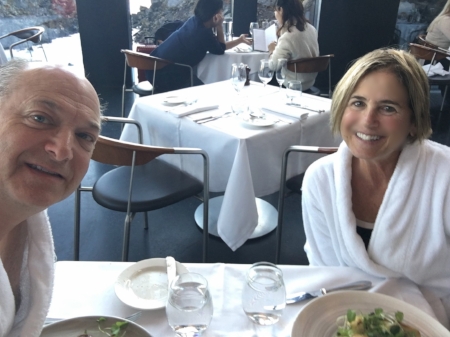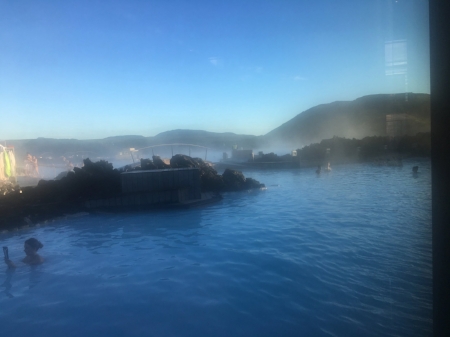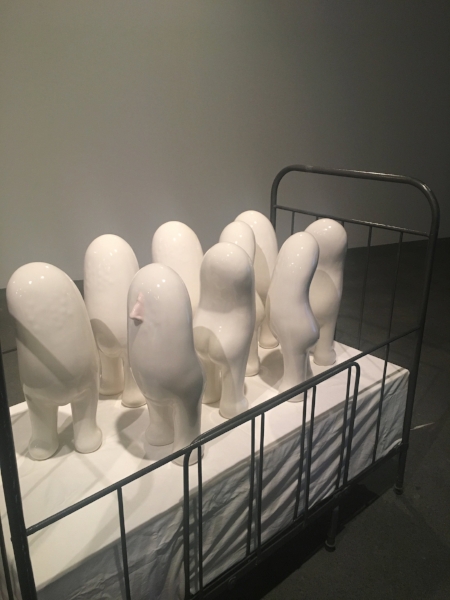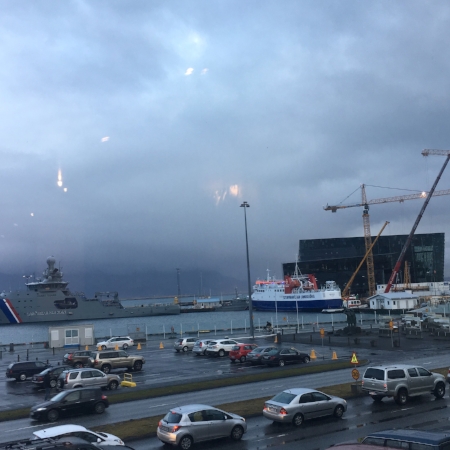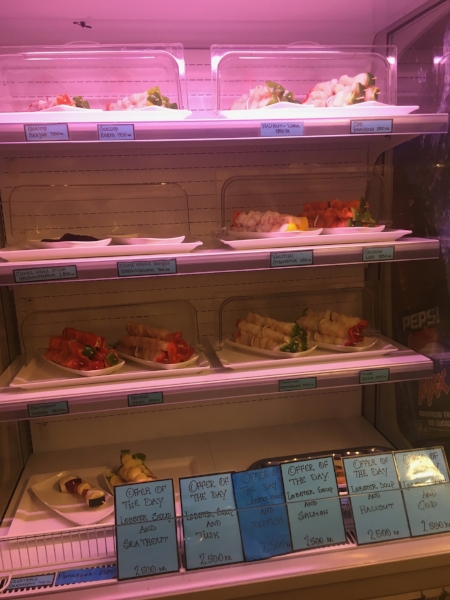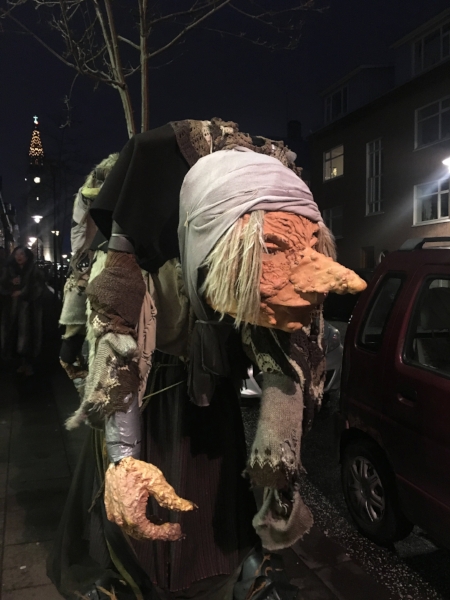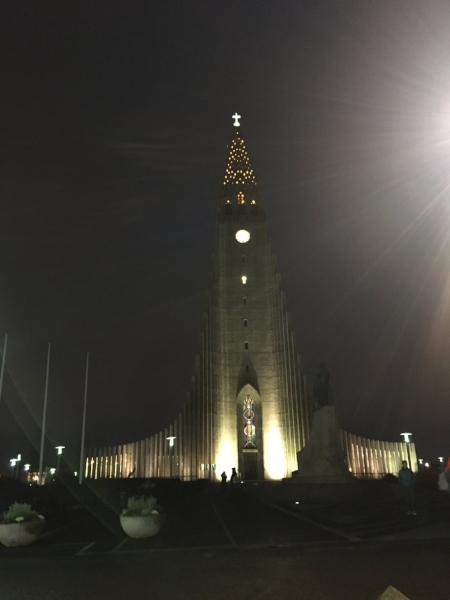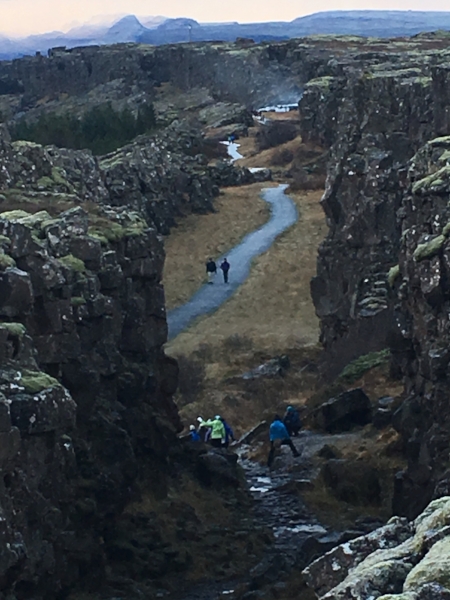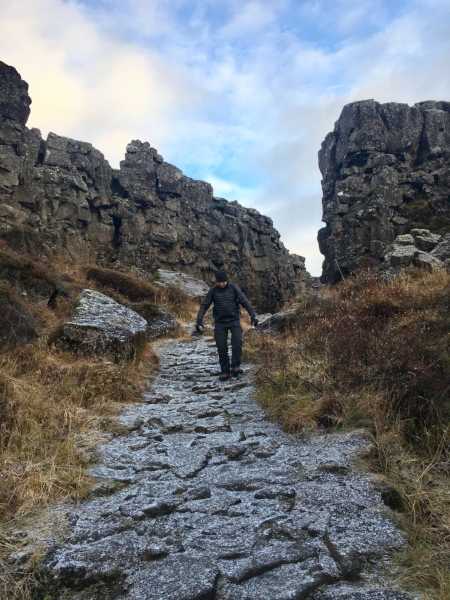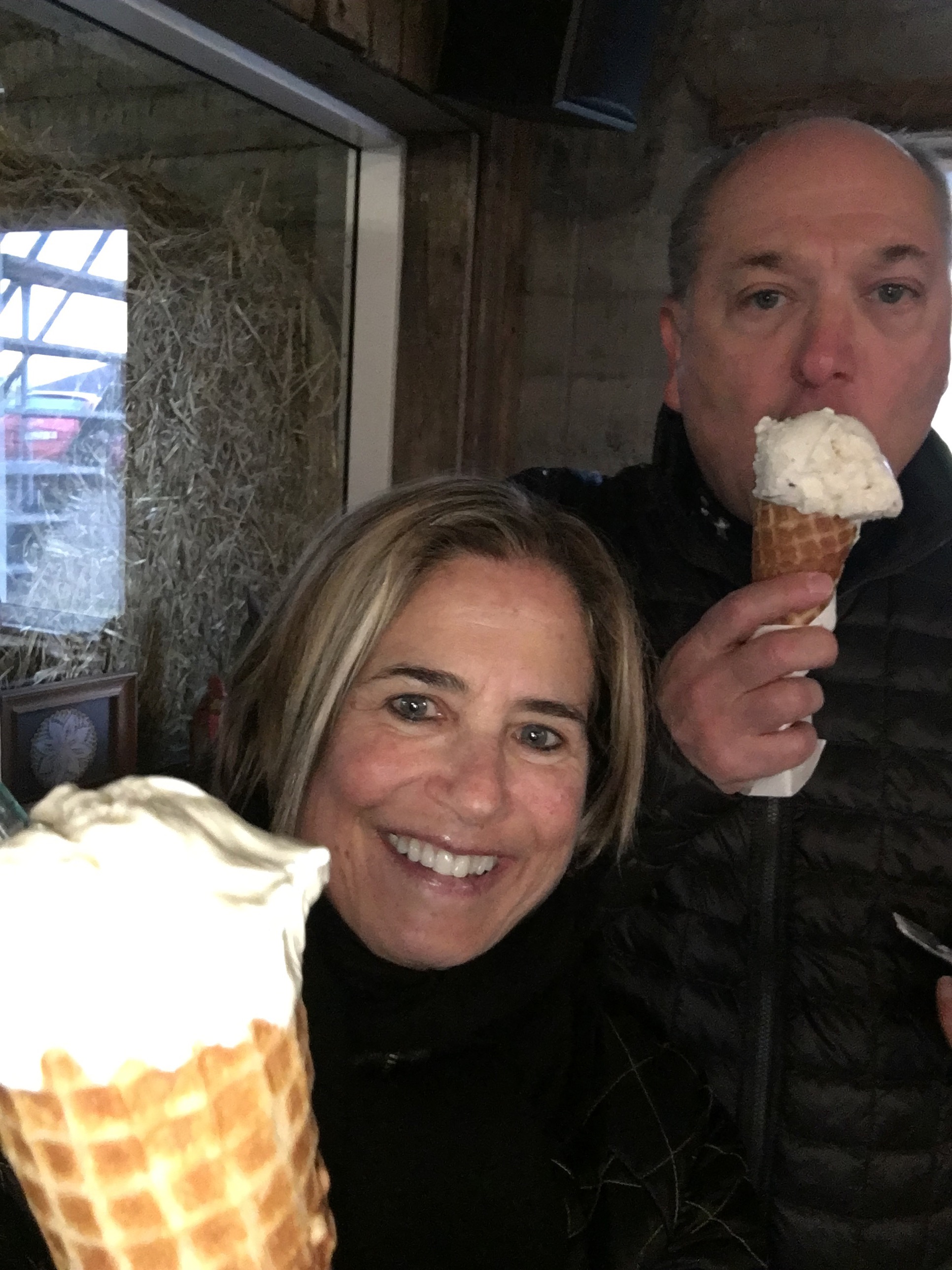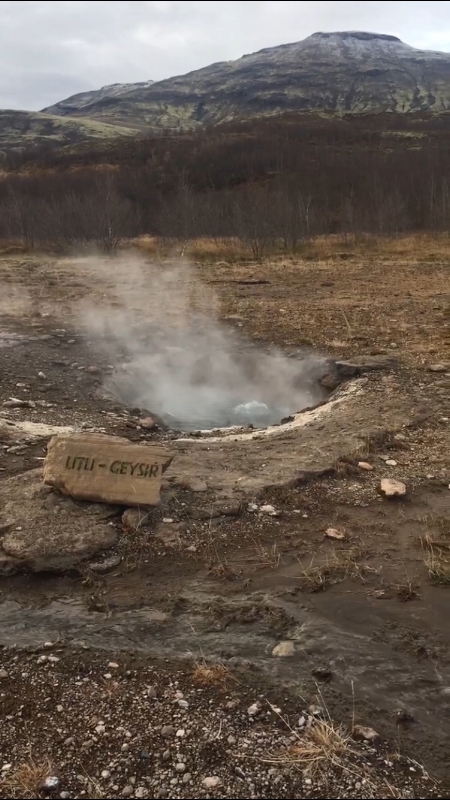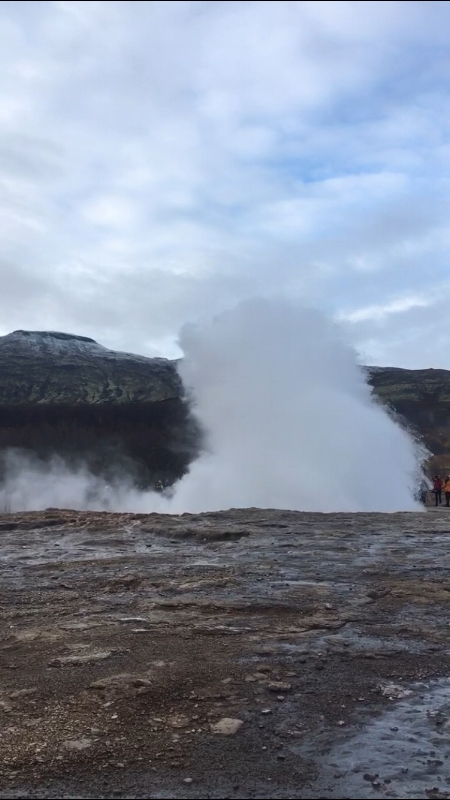My short, but entirely sweet, 3 days in Reykjavik
Along the Golden Circle, Hosted by Discover Iceland, I came across this. At Kerið volcanic crater lake outside Reykjavik, Iceland
Embrace the #stopover
Do you remember that week in 2010 when a volcano eruption disrupted air travel through much of Europe? I do. My husband, Bob, was on business travel in Amsterdam at the time and got stuck. Poor Bob. For a day or two he contemplated returning to the United States by getting a train to England first and then crossing the Atlantic on board the Queen Mary 2 from Southampton to New York.
That volcanic eruption? It was in Iceland. And if business wasn’t slow enough on that arctic island, that dark cloud didn’t help.
Since then, the fog has lifted for Iceland, and Reykjavik, the capital and largest city in Iceland, is one of the hottest places to visit, even when it’s below freezing much of the year. And for good reason. The tourism industry is incredibly strong - there are more than 600 tour companies operating in Iceland - and the major tourist spots are well run, offering good food and knowledgeable guides.
The popular #mystopover campaign is initially what turned our attention to Iceland. We had booked our cabin on the QM2 for the 8-night transatlantic crossing from Southampton to Brooklyn and were searching around for flights to London when we saw Iceland Air’s advertisements for booking air travel to Europe but stopping over, for up to 7 nights, in Reykjavik first. We’d contemplated visiting Ireland first or Scotland before spending 24 hours in London but there was something about the Iceland adventure that caught my eye.
I’ve been on a personal fitness revolution for nearly 4 years, and the payoff, simply, has been a ton of energy and a strong interest in doing anything active, particularly outdoors. We looked at photos online of Iceland’s icy terrain, geothermal hot springs, geysers, and miles and miles of hiking paths, and that was it. We booked our tickets to Reykjavik and our connecting flight to London 4 days later. We’d have 3 full days in Iceland.
We’d worried that with all the attention on Reykjavik and practically everyone I knew making plans to visit Iceland, the place would be overrun and kitschy. Not at all, it turned out, and Bob and I fully intend to return to the island for a longer stay, but this time in the summer when the days are longer and the weather temperate. We traveled the first week of November and saw just a small amount of snow on the ground.
3 Days in Reykjavik
Day 1
Our flight arrived at 6:30 am on a Wednesday morning. The flight from Washington, D.C., is only 5 hours, so we knew we’d be beat but didn’t want to waste the day sleeping or lounging around the hotel. Instead, we arranged for a bus transfer from the airport to the Blue Lagoon, Iceland’s most popular tourist spot with close to a million people visiting every year. National Geographic named the Blue Lagoon, located in an 800-year-old lava field, one of the “25 Wonders of the World," which is interesting, of course, but not why you go. On the south coast of Iceland’s Reykjanes Peninsula, about 20 minutes from the airport, the lagoon holds 3 million gallons of geothermal seawater, covering an area of around 5 miles. The water ranges from around 4 to 5 feet deep, which means you can walk in any direction with just your arms and head above comfortably warm seawater sourced directly as overflow from the Svartsengí geothermal energy plant. The runoff from the plant recirculates every 40 hours.
Doesn’t sound appealing? I didn’t think so either.
But what about this: The wellspring of the geothermal plant lies 6,600 feet below the earth, where the North American and Eurasian tectonic plates meet. According to the Blue Lagoon’s media guide, it’s in this spot where porous lava and searing heat, seawater, and groundwater converge, giving rise to a hybrid fluid called geothermal seawater. How cool is that? Under immense pressure, this geothermal seawater surges to the earth’s surface, emerging enriched with unique concentrations of silica, algae, and minerals. The Blue Lagoon is full of this, and as you walk around the lagoon, with much of your body submerged in the heated water, you’ll come across drink bars but also mud bars where you can smear mud and silica masks on your face and arms. The locker rooms, with cleverly devised lockers for your personal items, are stocked with large bottles of hair conditioner, which the lagoon staff recommend you put on your hair before entering the water. Otherwise the silica lingering in the mist can turn your hair stiff and brittle.
We booked our timed entrance to the Blue Lagoon directly on the Blue Lagoon website in advance and when we arrived we were handed a bathrobe, slippers, and a towel. Since so many tourists visit the Blue Lagoon either from or to the airport, there’s a little house set up in the parking lot to store your luggage. There are a few package options for your visit at the lagoon. We chose the premium package, which included our entrance ticket to the Blue Lagoon, silica and algae masks at the mud bar, towel, bathrobe, slippers, and a reservation and complimentary glass of sparkling wine at the Lava Restaurant on the premise.
The gift shop sells Blue Lagoon skin care products as well as waterproof cases for your phones and cameras, which plenty of people used so they could take photos and selfies while wading in the Lagoon. It’s such a surreal place that I can understand why people take photo after photo. You just don’t how else to describe the experience. We stashed our phones in the lockers and only brought one of the phones out for a quick photo. Next time we’ll buy the case or arrive with one.
You can purchase massage treatments and other upgrades, but your entrance fee gives you access to the waterfall within the lagoon and both the sauna and the steam baths carved into the lava rock.
We enjoyed our lunch at the restaurant in our bathrobes. The lunch menu was prix fixe and pricey at $63 for two courses and $72 for three courses per person, but we felt both the experience and the food were worth every penny. Food especially is crazy expensive in Iceland, and there is lots of joking around about this once you start meeting and talking with other tourists, many from the U.K. After a day or two you’ll find a way to put everything into perspective. As in, “Does it cost less than a cup of soup in Iceland?” Don’t be surprised if you’re asked to pay $15 for a cup of soup or $30 for a panini sandwich anywhere in and around Reykjavik.
We stayed at the Blue Lagoon until 4 pm and boarded a bus to the Grand Hotel, a 2-mile walk from downtown Reykjavik. The bus ride took a little over an hour, so by the time we checked in to our room and organized our things, we were fine having a light dinner of lamb skewers at the hotel lounge in a seat by the fireplace. It turns out plenty of locals go to the Blue Lagoon with their families. It might feel at first a bit like Disney Land, but like that popular theme park, the Blue Lagoon is well-equipped to handle the crowds so that you can enjoy the natural wonder of it all and explore at your leisure.
While the return to the hotel from the Lagoon at the end of the day was chaotic as there were too many people for seats on the bus, and it was cold waiting outside to board the bus, in the end, the tour bus system in Reykjavik is well developed and we got to where we needed to go. If you prefer a taxi, the cost from the airport to downtown Reykjavik is about $100 one way. The most popular bus is FlyBus, and as of this writing, Uber is not yet in Iceland.
A note about lamb in Iceland: When we ordered the lamb skewers we hadn't yet been aware of the abundance of lamb processed and consumed in Iceland. Much of the countryside is covered in moss, including lava surfaces, and the country is known for its free-range grazing lamb. The lamb meat, no matter where you get it in Reykjavik as it turns out, is delicious with characteristic earthy tones.
Day 2
We woke up to a rainy, gray day and considered booking another bus to the Blue Lagoon, but that seemed silly, although even as I’m typing this, it would have been fun to visit without the luggage and knowing what to expect. But we stuck to the plan and after breakfast in the hotel, we headed into downtown Reykjavik. We didn’t have anything specific lined up to do, but we knew we wanted to see art, which is abundant in Reykjavik, and eat some fish and seafood. Icelanders, in addition to eating a lot of fish and lamb, also enjoy a diet rich in, of all things, hot dogs. We were walking downtown near the harbor and bought our first hot dog of the trip from a little hot dog stand, Bæjarins beztu pylsur. The long, skinny hot dogs, which cost about $5, are made from beef, lamb, and pork, and they’re served with ketchup, mustard, relish, fried and raw onions, and a mayonnaisey remoulade sauce. We ended up having at least 3 hot dogs during our trip, and each one, like gelato in Florence, no matter where we bought it, tasted completely delicious.
A highlight was the Erró exhibit in the permanent collection at the Reykjavik Art Museum (LISTASAFN REYKJAVIKUR) and contemporary works on the top floor. Iceland claims the artist, born in 1932 in Iceland as Guðmundur GuðmundssonIceland, but for much of his life Erró has lived and worked in Paris. We also happened to be in Reykjavik during the Iceland Airwaves music festival, and there was a band rehearsing at the museum. Bands were also playing in venues throughout the city, and many had their doors open, so the streets were filled with live music. For dinner we walked over to the docks and selected our fresh fish at the counter at the understated but highly rated Saegreifinn, or sea baron, restaurant. The restaurant is most famous for its lobster soup, which Bob ordered, and fish grilled on skewers. We paid extra for a skewer of vegetables, and all dinners come with a basket of warm bread. This meal remains a highlight of our trip, and just thinking about it makes me want to go ahead and make my plane reservations for our return. It’s a busy place, but we were on the early side and sat upstairs where it was less hectic.
My friend Mimi, who left Reykjavik as we were arriving, sent me a note with her recommendations. She and her husband, Michael, said they had a great dinner at OstaBudin and recommended Sandholt bakery for coffee and pastries.
There is a lot of public art in Reykjavik, so while you’re there don’t miss the Monument to the Unknown Bureaucrat by Magnús Tómasson near the parliament house. The sculpture depicts the torso and lower body of a man holding a briefcase but he’s got kind of a sculpted stone brown bag over his head. Probably the most famous sculpture in Reykjavik is the Sun Voyager by Jón Gunnar Árnason on the waterfront. We walked by the Water Carrier, the 1936 large bronze sculpture of a person - could be a man or a woman - carrying two large jugs of water by Reykjavik-born artist Ásmundur Sveinsson and nearby was one of the larger-than-life Reykjavik trolls. As we left the square we approached the Hallgrímskirkja church, which was lit up and visible from almost anywhere in the city.
Earlier, we had stopped into the Settlement Exhibition, not too far from the hot dog stand, and beneath the Hotel Reykjavík Centrum. During construction of the hotel in 2001 workers discovered and experts excavated archaeological remains that could be the oldest relics of human habitation in Reykjavík. According to the exhibition, which focuses on the remains of the Longhouse, some fragments could date to before 871 AD. Even if you're not a history buff or an archeologist you'll appreciate the snazzy, high-tech quality of the exhibition itself. You touch a button and a multimedia light show or projection screen provides small bits of information about Viking life. The exhibition also includes artifacts from other excavations in Reykjavik.
Georg, from Discover Iceland, stayed in touch with us from the moment we arrived in Reykjavik to arrange a late-night tour of the Northern Lights. Unfortunately it was too cloudy all three nights we were in Reykjavik to see the Northern Lights or Yoko Ono’s Imagine Peace Tower, conceived in memory of John Lennon, situated on an island off Reykjavik. Next time.
Day 3
Next to the Blue Lagoon, taking a tour of the Golden Circle is the second most popular must-do activity during your stopover. As I was making my initial plans, the Golden Circle popped up everywhere, but I could not visualize just what any of the guidebooks meant by the phrase “Golden Circle.” In fact, there isn’t anything particularly golden and it’s not exactly a circle, but in general, any “Golden Circle” tour will include stops at several natural wonders, including the Þingvellir National Park, the Gullfoss waterfall, and the geysers at Haukadalur. Our Discover Iceland hosts, Georg and Karen, arranged for our driver, Gummi, to pick us up at our hotel at 8:30 Friday morning. Georg offers several options for exploring the sights in the Golden Circle, including in smaller off-road jeeps, in a minibus, and tours offering the opportunity for more significant glacier hiking.
Georg told me his Golden Circle Glacier tour is a popular option that offers an in depth and personalized experience. The superjeep carries up to 5 passengers and is modified to go off road and drive on the glacier. On this trip, you’ll spend 2-3 hours in the highlands and driving at Langjökull glacier.
As we were looking for an overall introduction to the Golden Circle, we opted for the minibus Spicy Golden Circle tour. Guided by Gummi, whose English-speaking skills were impressive as he offered cultural background and historical anecdotes during the 8-hour tour, we had the opportunity to spend between 20 and 30 minutes at each site hiking on challenging walkways and trails. The weather was bone-chillingly cold and at times windy, but we were dressed appropriately in our cold weather tech gear, and since we were only outside for about half an hour at a time, we were fine.
On the luxury minibus with us were mostly tourists from the U.K., and there was one other U.S. family. Each stop along the way felt like the highlight of the day, but one unexpected highlight was Gummi’s stop at Efstidalur dairy farm in Bláskógabyggð. Apparently it was the family’s grown children’s idea to make their own ice cream and sell it at a small ice cream counter set up in the barn with the cows. Bob and I independently opted for 2 scoops of the white chocolate ice cream in a handmade waffle cone. Both the ice cream and the waffle cone were remarkably fresh and light-tasting, and not too sugary-sweet, although I doubt either one was particularly light on fat or sugar. I was sad to take that last bite of that cone and will make sure whatever we do when we return to Reykjavik that we make at least one trip to that farm, but I'm not ruling out two.
The most challenging hiking was at Þingvellir (Thingvellir) National Park where the trails were steep and rocky but our reward was hearing the powerful sounds of one waterfall after another and panoramic views of Thingvallavatn, Iceland’s largest lake. Apparently this hike along the Almannagja rock wall marking the eastern boundary of the North American plate was also the walk prisoners took as they met a violent fate. The small memorial plaque at the spot of the ancient Parliament House commemorating the 18 women who met their death by drowning in the "Drowning Pool" for committing "immoral" acts catches you by surprise as you stand in awe of the place and try to reconcile Iceland today with the island's 17th century history of violence.
As we entered Gullfoss, we walked right past the sign warning us to attach traction cleats to our boots. The trail, which was cut along the hillside at the edge, was coated in ice, but oh well, we didn’t see anybody slide over the cliff.
(I had a moment during the tour when I remembered the first time I rode my bike along the Silverado Trail in Napa Valley and thought to myself, after hours of riding, if I see another grape vine lining the road I’ll shoot myself. It was only a moment – I never truly felt that way in Iceland. I could see a 100 falls and not get tired of the awesome sight.)
It was time for lunch so it was lucky for us that we happened upon perhaps the most famous geyser (pronounced gay-zur in Iceland) at Geysir Haukadalur, which is also the home of the above-mentioned $15 cup of soup at Súpa at the Hotel Geysir. Along the path to Haukadalur is Little Geyser and if you’re patient you only have to wait 4 minutes or so for the big one to erupt. How exciting. Now time for soup.
And, yes, it was that delicious. Fifteen dollars well spent.
Next we stopped and hiked around Kerið, a volcanic crater lake in Grímsnes. We had the option to walk around the top of the crater, looking down at the lake, which formed after the volcano erupted, or to climb down the steep-walled, red volcanic rock. Or if you were feeling energetic, Gummi gave us time to do both. As we climbed to get to the top of the crater I began to notice tourists of all ages using trekking poles, sometimes one in each hand, so if you’re concerned about the uneven terrain, these high-tech, collapsible, hiking sticks might interest you. I’ve got my eye on a few models myself. Gummi told us in summertime, there are concerts on the lake.
As it was getting dark, and we started making our way back to our hotel, Gummi made one last stop before the sun set. Especially after Gummi took us to the Scoria volcanic bright-red rock quarry and excavation site at Seydisholar, seeing the black sand beach at Ölfus seemed almost over the top. Wow. What a sight. The black sand felt clean and slightly pebbly in your hand and like the Blue Lagoon the sight reminded me of the cypress trees along the 17-mile drive in Carmel, California, which seem to pop out of Disney’s Fantasia.
After returning to our hotel and enjoying a drink in the lobby bar during happy hour we walked midway into downtown Reykjavik to have dinner at the locally popular Ban Thai. The small restaurant was full when we arrived. We waited about 15 minutes and were seated next to a large group of what looked like 2 families. The families enjoyed course after course and round after round of beer while we enjoyed our dinner of Kra Prow with lamb, Kaeng Koong with haddock, and Pad Thai Koong. As we waited for our dishes to arrive and watched wait staff and chefs whizzing in and out of the swinging door outside the kitchen we thought it was unfortunate the restaurant felt it needed to apologize for taking the time to prepare all of the dishes to order. There was a note on the menu advising that when the restaurant is busy it might take longer than usual to prepare the food. We were on vacation. Take as much as time as you need. The food was superb and absolutely worth the wait.
***
At the Reykjavik airport early Saturday morning, waiting to board our flight to London, we indulged and had one last hot dog. Yes, it was 7:30 in the morning. It was delicious.
Uh, huh. We'll be back.












